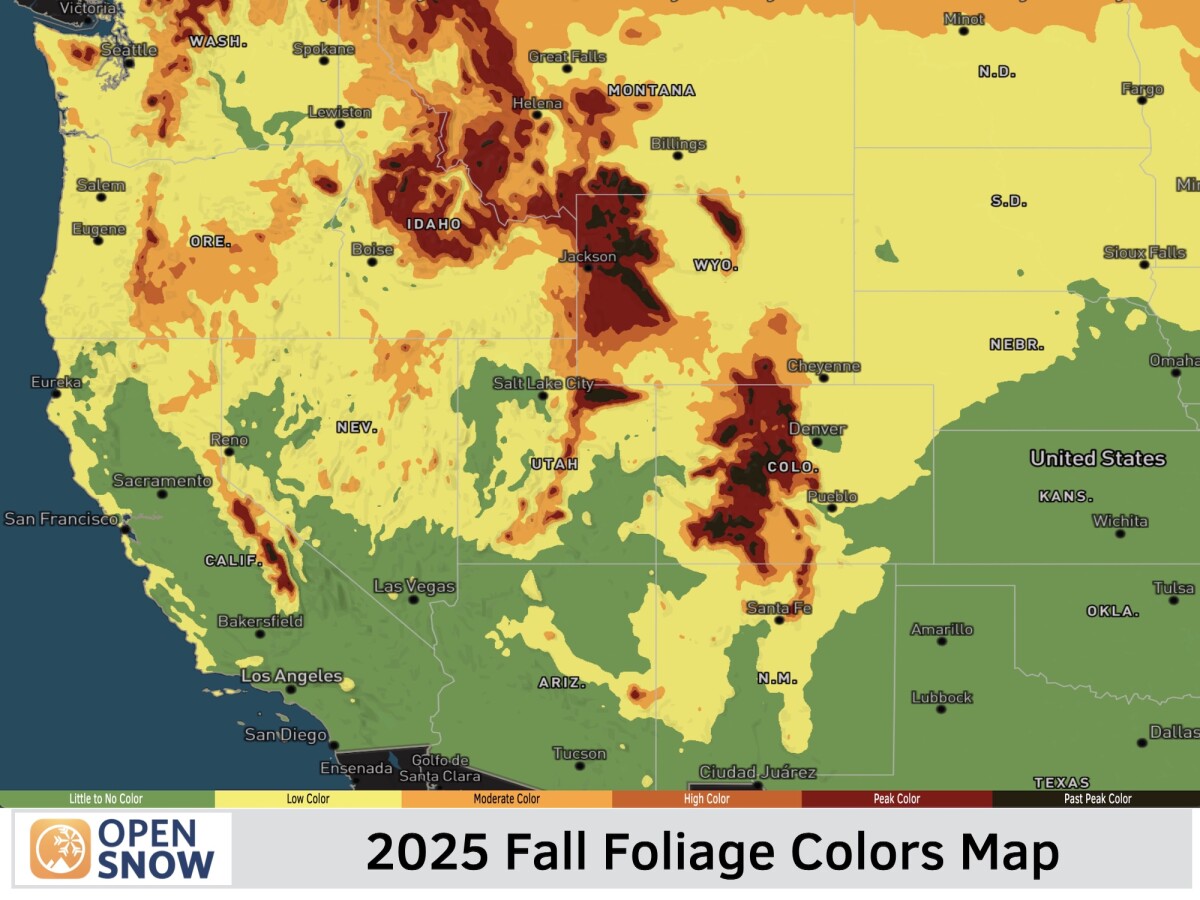Western US Daily Snow

By Alan Smith, Meteorologist Posted 1 year ago July 31, 2024
Heating Up with Smoky Conditions from California to Colorado
Summary
Parts of the Northwest saw welcome rain early this week, and the cooler and more humid airmass has led to a reprieve in fire intensity and smoke, at least for now. However, smoke has shifted southward, extending from CA to UT to CO. The monsoon remains confined to Arizona & New Mexico for now, but will gradually expand into the Sierra & Central Rockies late this week.
Short Term Forecast
Big Picture Weather Pattern:
A trough of low pressure moved across the Northwest and Northern Rockies early this week, and a higher-humidity airmass associated with this trough helped to scale back fire behavior a bit while areas along and west of the Cascade crest picked up impressive rainfall for late July.
In the wake of this trough, smoke has become less widespread across the Interior Northwest, but the smoke plume associated with the Park Fire in California has shifted southward and will impact Northern Utah and Northern Colorado over the next two days.
To the south, monsoonal moisture largely remains confined to New Mexico and Arizona for the time being.

Smoke Forecast:
Fires are still burning in the Interior Northwest, but intensity and smoke transport have decreased for the time being with smoke becoming more localized.
Wednesday – Smoke from the 386,000-acre Park Fire in California is the biggest smoke culprit at the moment, and the plume of smoke associated with this fire will impact Northern Utah and Northern Colorado on Wednesday. There are also a couple of fires burning in the Front Range Foothills of Colorado that could enhance air quality concerns locally.
High-Res Smoke (Sky) Forecast for 5pm MT Wednesday:

Thursday – Western Colorado will see some improvement while the Front Range will likely stay smoky. Northern Utah will also hang onto some smoke, while heavier smoke is expected from Northern California into Western Oregon where winds will be blowing out of the south. General haziness is expected across a greater portion of the West.
High-Res Smoke (Sky) Forecast for Noon MT Thursday:

Friday-Saturday – Winds blowing from the south/southwest will continue to transport smoke from the Park Fire into Northern California with an eastward shift from Western Oregon into Central/Eastern Oregon.
Also, parts of the Interior Northwest and Northern Rockies will see a gradual uptick in smoke from the Park Fire, as well as other fires in the Northwest that will start to wake back up.
The Colorado Front Range may continue to see smoke depending on fire behavior from local fires.
Air Quality Forecast for 3pm MT Friday:

5-Day Temperature Forecast:
Temperatures will also heat back up as a ridge of high pressure builds over the Far West. Above-average temperatures are expected throughout the West, with the highest anomalies expected over the Northwest.

Rain and Thunderstorm Forecast for Wed (Jul 31) to Thu (Aug 4):
Thunderstorm activity will primarily be confined to Arizona and New Mexico, while southern portions of Colorado including the Sangre de Christo Range and Pikes Peak could see some storms as well. Locally heavy rain will be possible with Southwest thunderstorms.

Arizona:
The southern ranges of Arizona around Tucson will see the highest thunderstorm coverage and heaviest rainfall potential, while the Mogollon Rim northward to Flagstaff will also be favored. Thunderstorm activity looks more isolated around the Grand Canyon.

Here is our 5-day forecast for Mt. Lemmon with an hourly snapshot of precipitation and lightning on Wednesday:

New Mexico:
Scattered thunderstorms can be expected throughout New Mexico with locally heavy rain possible, though widespread heavy rain is not expected.

Forecast for Fri (Aug 2) to Sat (Aug 3):
Monsoonal moisture will increase and begin to spread northward and westward with an uptick in thunderstorms across Northern Arizona and throughout New Mexico. Southern Colorado will also see an uptick in storm coverage with some isolated activity for the Front Range.
The Sierra Nevada Range will also see a significant moisture surge with numerous thunderstorms, some of which will produce heavy rain. Southwest Utah and Nevada will also see an uptick in activity, with isolated storms extending into Southern and Eastern Oregon.

There are some model disagreements on the northern/eastern extent of moisture, with some models (not including the one pictured above) projecting thunderstorm coverage to expand across a greater portion of Utah by Saturday.
Forecast for Sun (Aug 4) to Mon (Aug 5):
Monsoonal moisture will progress eastward and northward with a decrease in thunderstorm coverage over the Sierra, while Utah and Colorado will see a significant uptick in coverage.
Also, monsoonal moisture will reach the Northern Rockies with an increase in thunderstorms expected. At the same time, a cold front will slide down the east side of the Continental Divide and winds blowing from the east behind the front could transport additional moisture into Central Montana, resulting in the potential for heavy rainfall.

Extended Forecast
Outlook for Tue (Aug 6) to Sat (Aug 10):
A tall ridge of high pressure centered near the West Coast will favor hot temperatures west of the Continental Divide with the highest anomalies over the Pacific Northwest.
East of this ridge, a northwest flow pattern will lead to a series of cold fronts sliding down the east side of the Divide, resulting in below-average temperatures for the central and eastern ranges of Montana and Wyoming and near-average temperatures in Colorado.
Moisture levels and thunderstorm chances will be higher near and east of the Divide in the Rockies in association with this northwest flow pattern, while west of the Divide, a seasonally active monsoon pattern will keep thunderstorm chances high across the Four Corners region.

Thanks so much for reading! Next update on Friday (August 2).
Alan Smith
About Our Forecaster




